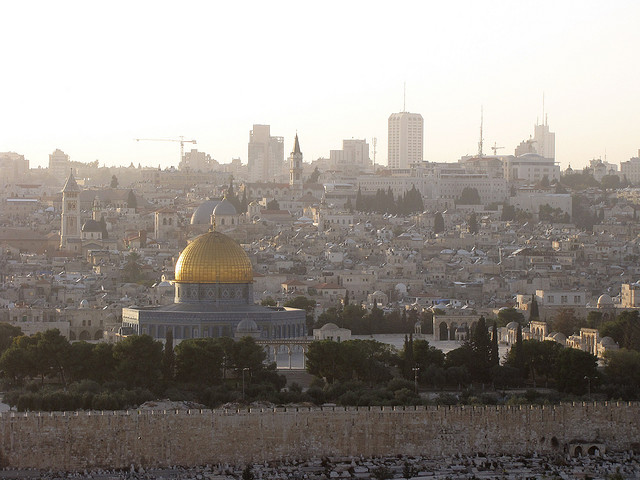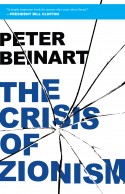
At the turn of the 20th century, Theodor Herzl, the founder of Zionism, found inspiration for Israel’s future in the republic of Venice, and was repulsed by the nationalism of the Boer states in Southern Africa. But Herzl’s vision of a Jewish republic, argues journalist Peter Beinart, has been slipping away since the 1967 Six-Day War. Beinart visits Zócalo to ask if Israel’s democracy can be saved. The following is an excerpt from his latest book, The Crisis of Zionism.
1
The Crisis in Israel
As a Zionist, I believe that after two millennia of homelessness, the Jewish people deserve a state dedicated to their protection in their historic land, something enjoyed by many peoples who have suffered far less. As a partisan of liberal democracy, I believe that to honor that history of suffering, a Jewish state must offer equal citizenship to all its inhabitants. In the spirit of Hillel, it must not do to others what Jews found hateful when done to them. Are these principles in tension? Absolutely. There will always be tension between Israel’s responsibility to the Jewish people and its responsibility to all its people, Jewish and non-Jewish alike. But as the scholars Alexander Yakobson and Amnon Rubinstein have noted, “Tension between values, in and of itself, is no indication that one of the competing values is illegitimate.” If there is tension between Zionism and liberal democracy, there is also tension between economic development and environmental protection, or government spending and fiscal discipline, or civil liberties and national defense, or many other goals that governments rightly pursue. At the heart of the Zionist project is the struggle to reconcile these two valid but conflicting ideals. If Israel fails in that struggle, it will either cease being a Jewish state or cease being a democratic one. Today, it is failing, and American Jews are helping it fail.

Theodor Herzl would be distraught, but not surprised. The man who founded the Zionist movement did not merely want a Jewish state. He wanted a Jewish state that cherished liberal ideals. And he knew that to create such a state, Jews would have to wage a battle for its soul. In 1902, he wrote a novel called Altneuland (Old New Land) about a future Jewish country. Herzl’s Jewish country is an impressive place. It guarantees freedom of speech and freedom of religion; rabbis enjoy “no privileged voice in the state.” The book’s hero, a presidential candidate named David Littwak, speaks Arabic, and one of his closest allies is an Arab engineer from Haifa. In their political party, Littwak tells a visitor, “We do not ask to what race or religion a man belongs. If he is a man that is enough for us.”
But, Littwak admits, “there are other views among us.” Their foremost proponent is a Rabbi Geyer, who seeks to strip non-Jews of the vote. Herzl modeled Geyer on an anti-Semitic demagogue in his native Austria, thus raising the specter that once Jews enjoyed power they might persecute others in the same way gentiles had persecuted them. The novel ends with the campaign between Littwak’s party and Geyer’s. “You must hold fast to the things that have made us great: To liberality, tolerance and love of mankind,” one of Littwak’s supporters tells a crowd. “Only then is Zion truly Zion!” In his final words, the outgoing president declares, “Let the stranger be at home among us.” After a fierce contest, Littwak’s party wins, Geyer leaves the country, and in the novel’s epilogue, Herzl implores readers to make his Zionist dream come true.
As a vision of the Zionist future, Altneuland has its problems. While Herzl believed deeply in equality for individual Arabs, he could not imagine an Arab national movement demanding a state in Palestine of its own. (His rival, the cultural Zionist Ahad Ha’am, knew better, insisting that “This land is also their national home … and they have the right to develop their national potential to the best of their ability.”) Still, for all its flaws, Altneuland shows that while Zionism was a nationalist movement, it was also, from the beginning, a liberal one. (Even those early Zionists who identified themselves as socialists mostly shared a liberal conception of freedom of conscience and equality under the law.) Zionism’s founding fathers-men like Herzl, Moses Hess, and Leon Pinsker-were children of the Enlightenment. Earlier in their lives, each had hoped that as the nations of Europe dedicated themselves to the rights of man they would eventually extend those rights to Jews. When anti-Semitism refused to climb into history’s grave, and instead reincarnated itself in racial, pseudoscientific form, the Zionist intellectuals lost faith in Europe and decided that only in their own state could Jews live safe, full lives. But they did not lose faith in Enlightenment ideals; they transplanted them. “We don’t want a Boer state,” wrote Herzl in his diary, expressing revulsion at racist Afrikaner nationalism. “But a Venice.”
But Herzl knew that a tolerant, cosmopolitan republic like Venice was not preordained, that Jews were entirely capable of birthing a Boer state. This conflict, between the desire to build a Jewish state premised on liberal democratic principles and the temptation to flout those principles in the name of Jewish security and power, runs throughout the Zionist enterprise. It is the battle every Zionist generation wages against itself. In May 1948, in “The Declaration of the Establishment of the State of Israel,” the state’s founders promised “complete equality of social and political rights to all its inhabitants irrespective of religion, race or sex.” Yet in the war that preceded and followed those majestic words, Zionist forces committed abuses so terrible that David Ben-Gurion, Israel’s first prime minister, declared himself “shocked by the deeds that have reached my ears.” In the town of Jish, in the Galilee, Israeli soldiers pillaged Arab houses, and when the residents protested, took them to a remote location and shot them dead. During the war, roughly 700,000 Arabs left Palestine, and irrespective of whether most left their homes voluntarily or were forced out, Israel refused to let them return.
In the struggle to build a Jewish state in the face of implacable foes, the liberal ideals outlined by Israel’s founders were brutally flouted. But the fact that those liberal ideals existed at all created space for democratic struggle. When the war of independence ended, Israel gave citizenship to the Arabs still living within its territory, which was more than the refugees gained in most of the Arab countries to which they fled. The rights of Israeli Arabs were curtailed, to be sure: in Israel’s first decades, most lived under martial law. But Arab and Jewish Israelis joined together to protest this blatant discrimination, and in 1966 martial law was lifted. Massive inequities remained, but it was possible to believe that, slowly and fitfully, the gap between Zionism and liberalism was narrowing, that Israel was moving in the direction of Herzl’s dream.
Then, in 1967, the Six-Day War turned history’s trajectory upside down. With its Arab neighbors poised to attack, Israel struck first, fought brilliantly, conquered the West Bank of the Jordan River, among other territories, and began to settle the land (a process made easier by the Arab world’s apparent refusal to offer peace, even if Israel gave the new territories back). For a country built by pioneers, this was natural. Settling land-especially land as rich with biblical meaning as the West Bank-was in the Zionist DNA. The problem was that this time, liberal ideals did not tether the Zionist project. A year after it eliminated its most flagrant discrimination against its own Arab citizens, Israel made itself master of millions of Palestinian Arabs who enjoyed no citizenship at all. Suddenly, Rabbi Geyer had a kingdom of his own.
Copyright © 2012 by Peter Beinart. Reprinted by permission.
*Photo courtesy of acroll.




Send A Letter To the Editors